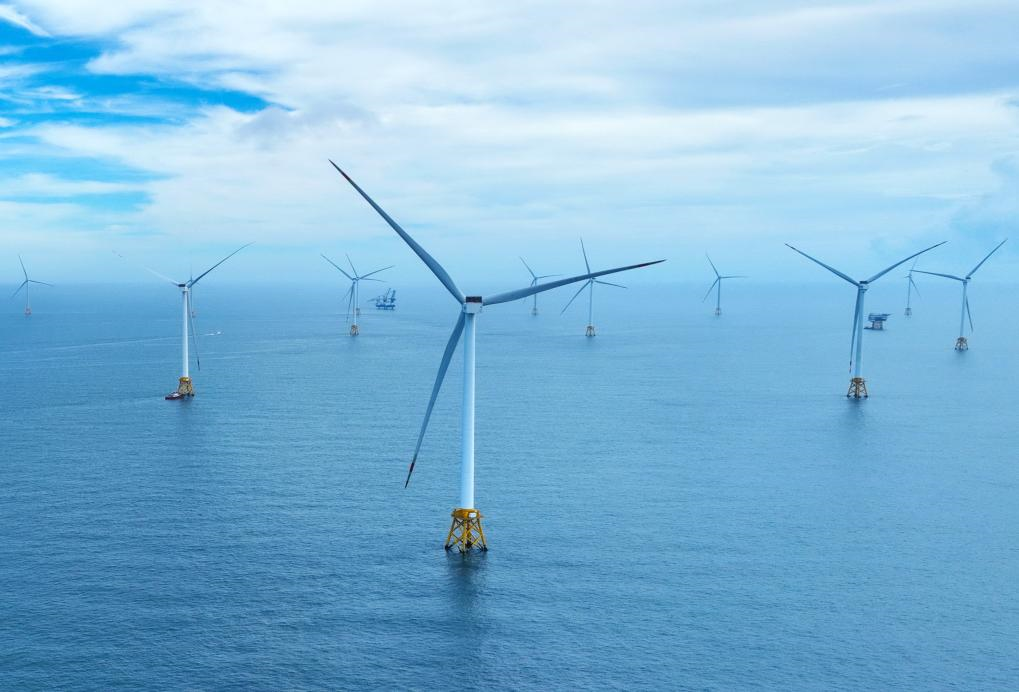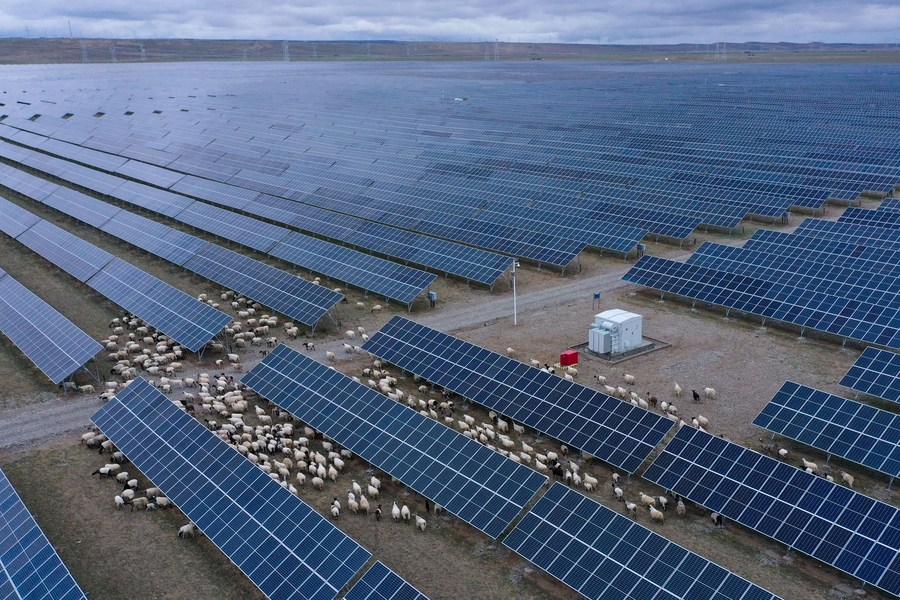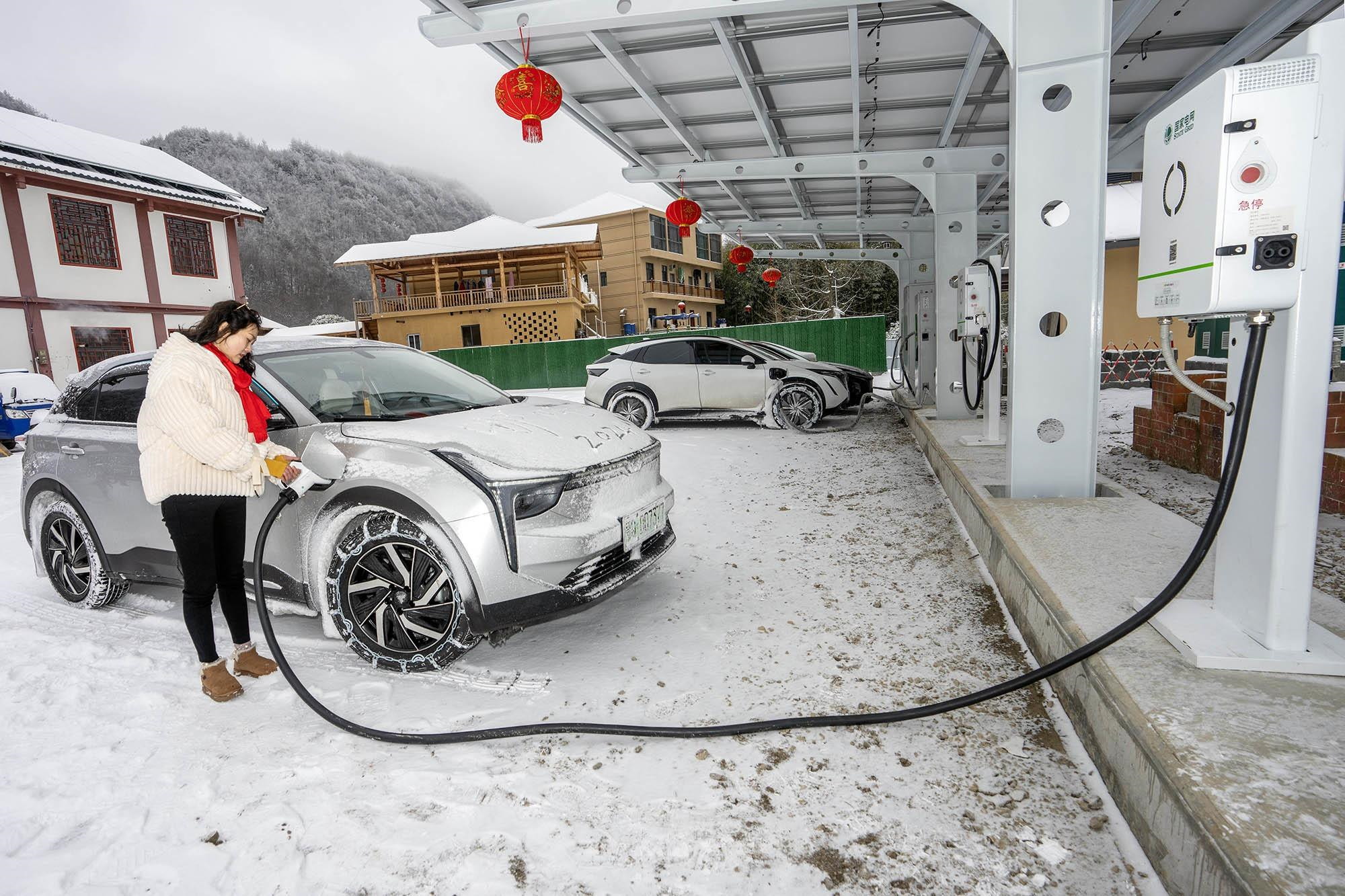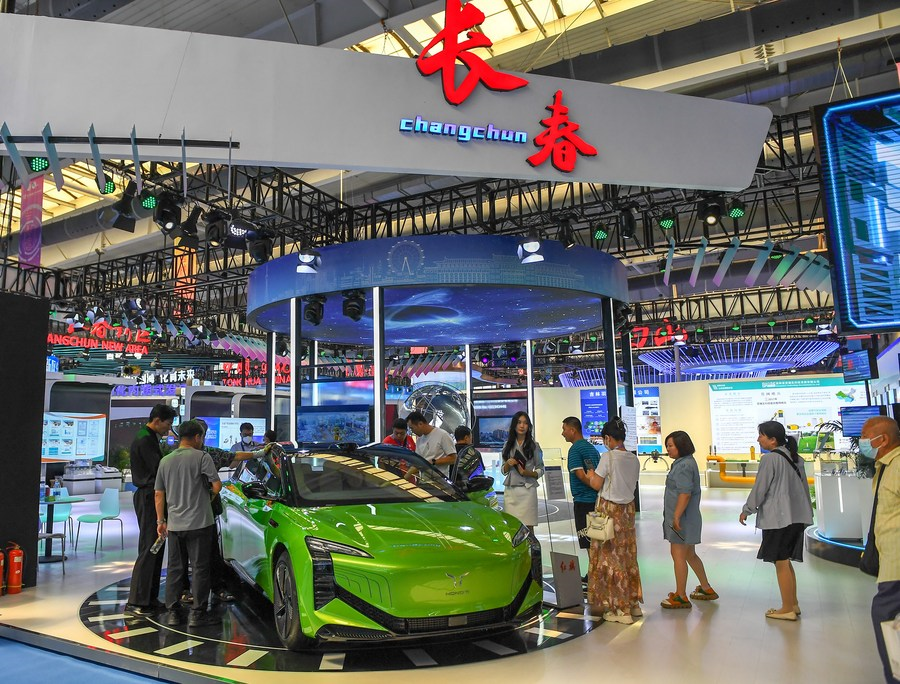China Energy and Environment
China Energy, Environmental & Climate Policies


China is the world’s undisputed renewable growth leader
What is China’s Green Transition Plan?
‘‘On August 11, 2024 China unveiled a set of guidelines which aims to foster the country's green transition in all areas of economic and social development. Jointly released by the Communist Party of China (CPC) Central Committee and the State Council, the guidelines, for the first time, present a systematic national approach to China's green transition.
According to the guidelines, China will achieve "remarkable results" by 2030 in its green transition across all areas of economic and social development, with the scale of the country's energy conservation and environmental protection industry forecast to reach about $2.1 trillion. By 2035, a green, low-carbon, and circular ecosystem will be basically established, and the goal of a beautiful China will be basically achieved.
To accomplish this daunting task, China, guided by the plan, will vigorously embark on a host of activities including promoting green and low-carbon transition in various sectors such as energy, manufacturing and transport across urban and rural communities.
Through enhanced national efforts delineated by the guidelines, China, seeks to increase the share of non-fossil energy to approximately 25 percent of energy consumption by 2030 and concurrently reduce carbon emission intensity of commercial transport per unit of turnover by about 9.5 percent compared with 2020. Ultimately, these colossal gains, if successfully achieved within the specified timeframe, will undoubtedly mark another significant milestone towards a sustainable future, not only for China but the entire world.
In fact, the feat would not be the first time China had delivered on its climate promise. At the general debate of the 75th session of the United Nations General Assembly in September 2020, Chinese President Xi Jinping indicated that China is committed to its climate goals. He said, "China will scale up its Intended Nationally Determined Contributions by adopting more vigorous policies and measures. We aim to have carbon dioxide emissions peak before 2030 and achieve carbon neutrality before 2060."
True to his word, since 2020 China has embarked on an enhanced and concerted national agenda to bolster renewable energy capacities in the country's energy generation mix and promoted green and low-carbon transition in industrial structure and other key sectors such as transport. During this period, enhanced national action has not only yielded concrete results in China, but has also injected strong impetus into green development and low-carbon transition worldwide.
According to the International Energy Agency (IEA) China is the world's renewables powerhouse – the Asian giant accounts for nearly 60 percent of new renewable energy capacity expected to become operational by 2028. IEA forecasts show China is on track to achieve its national 2030 target for solar and wind installations by the end of 2024, six years ahead of schedule.’’ – This is an excerpt from the Ghana Centre for China Studies (GCCS) publication titled ‘‘Green transition plan shows China's commitment to low-carbon goals,’’ published in a joint collaboration with the China Global Television Network (CGTN).

Does China’s Green Transition Impact the Rest of the
world?
‘‘With a goal to peak carbon dioxide emissions before 2030 and attain carbon neutrality before 2060, China's unwavering commitment to realize this daunting challenge certainly impacts global green transition. China has continued to increase investments in clean energy consistently, driving growth in global clean energy investments. Data from the International Energy Agency (IEA) reveal that in 2021, China once again recorded the highest clean energy investment with $380 billion, followed by the EU ($260 billion) and the U.S. ($215 billion).
Since 2020, clean energy investments have increased at an annual average growth rate of 12 percent, a significant progress in the fight against climate change. For 2022, clean energy investments are expected to account for nearly three quarters of growth in overall energy investments. This reflects a sharp contrast to investment levels for the first five years after the Paris agreement was signed in 2015, when the annual average growth rate was just over 2 percent.
However, this growth is misleading as it is concentrated in only a few countries, mainly China and advanced countries. At present, clean energy expenditure in emerging and developing countries (excluding China) remains stuck at 2015 levels – a condition which most likely could have been worse without Chinese investments.
For example, in sub-Saharan Africa (SSA) where China is the largest investor in the region's power sector, data from the IEA show that between 2010 and 2020, renewable sources, including 49 percent from hydropower, account for 56 percent of total energy capacity added by Chinese projects within the specified timeframe. With the support of the Chinese government, Chinese stakeholders have provided the region with integrated solutions in clean energy generation capacity and in transmission and distribution via a combination of Chinese development assistance (loans), equity investment and government-driven investments.
While Chinese investments underpin SSA's growth in renewable energy investments, it is worth mentioning that China's contribution to advancing low-carbon transition in Africa and the world as a whole transcends the investments listed earlier. For example, since 2008 annual patent applications in net-zero energy technologies have grown exponentially, and China is the major driver of global growth.
According to a report (2021) by Elsevier, China had the largest patent portfolio in carbon-free energy technologies by 2015 in the top 10 countries and regions, after surpassing the U.S. and Japan in 2012 and 2014, respectively. As at the end of 2020, nearly 50 percent of all active patents came from China.
China's outstanding contribution to clean energy research and development has yielded phenomenal results in the last decade. Presently, the country is home to the world's largest installed capacity of renewable energy, which is a strong indication that China is on track to achieving its climate goals.’’ – This is an excerpt from the Ghana Centre for China Studies (GCCS) publication titled ‘‘Clean energy investments: China's push for greener global future,’’ published in a joint collaboration with the China Global Television Network (CGTN).
Frequently Asked Questions (FAQs)
- Is China "flooding" the global market with cheap products and "distorting" the market rules?
- Is the export of Chinese products an attempt to digest obsolete capacity or to drive global green transition?
‘‘Data released by the National Energy Administration (NEA) show that in 2023 China single-handedly contributed more than 50 percent of the total 510 gigawatts of newly-installed renewable energy capacity around the world. Over the last decade, China has exported various green tech products including wind and photovoltaic equipment to over 200 countries and regions worldwide, contributing to strengthening global response to climate change.
A report from BloombergNEF shows that global spending on the clean-energy transitions reached a record $1.8 trillion in 2023, up 17 percent year-on-year, driven largely by China. Global spending on clean-energy transition last year which includes investments to install renewable energy, build hydrogen production systems, buy electric vehicles and deploy other green technologies will not suffice to get on track to net-zero emissions – the world should be investing more than twice as much in clean technology in order to achieve net-zero emissions by mid-century.
In the case of electric vehicle (EV) sales, demand for EV batteries is also set to grow quickly. In its Global EV Outlook 2024, the International Energy Agency (IEA) forecast that by 2030, EV battery demand will grow four-and-a-half times, and nearly seven times by 2035 compared to 2023.
According to the International Energy Agency, China's contribution has been central in reducing costs globally for solar photovoltaics, with multiple benefits for clean energy transitions. China's investment in new photovoltaics supply capacity is 10 times more than Europe’s and has created more than 300,000 manufacturing jobs across the solar panel photovoltaics value chain since 2011.’’ – This is an excerpt from the Ghana Centre for China Studies (GCCS) publication titled ‘‘Is China dumping obsolete capacity or contributing to global growth?’’ published in a joint collaboration with the China Global Television Network (CGTN).


Economic Growth and Environmental Conservation: Is China pursuing one
at the expense of the other?



China has transformed from one of the poorest countries into the world’s second-largest economy


Did China achieve this remarkable economic feat at the expense of the
natural environment?
‘‘According to the State of the World's Forests 2020, a jointly published report from the Food and Agriculture Organization (FAO) and the United Nations Environment Program (UNEP), from 1990 to 2020, the world lost about 420 million hectares of forest.
Driven by the expansion of agriculture, frequent wildfire, increased exploitation of mineral resources and rapid infrastructure development, most of which are embedded in the fabric of human civilization, these incidents and activities have accelerated forest degradation and deforestation worldwide. This worrying trend has depleted global forest cover considerably.
As a matter of concern, the immensity of forest loss around the globe has prompted increased global efforts to address this challenge, a concerted action that has so far proved to be a step in the right direction. Between 2015 and 2020, the rate of forest deforestation was estimated to be 10 million hectares (100,000 square kilometers) per year, a decline from 16 million hectares per year. While this feat is obviously significant progress, it is worth knowing that this vital gain would not have seen the light of day without China's consistent and monumental contribution.
The Chinese government's commitment to bolstering forest cover has been exemplary and unparalleled in the last three decades. A 2021 FAO study found that among the 236 countries and territories covered by the FAO Global Forest Resources Assessment, China's high and consistent increase in forest cover from 1990 to 2020 is unrivaled. Global planted forests increased from 170 million hectares in 1990 to 292.6 million hectares in 2020, and China accounted for nearly one-third of the growth.
At the regional level, China contributed almost two-thirds of Asia's planted forests for the duration, which is a remarkable accomplishment, but China's contribution has not been limited to planted forests.
The country has also emerged as a major contributor to naturally regenerated areas, another driver of forest growth. In Asia and at the global level, naturally regenerated forests recorded a drop of 4.7 percent and 7.5 percent, respectively. But this result contrasts with China's performance, as the country experienced a growth of 19.5 percent – an outstanding progress that ranks China among very few countries that registered a significant increase in naturally regenerated forests in the last three decades
China's consistent and exceptional contribution to increasing forest cover has been a game changer, an essential investment that has been rewarding for the entire world in the last three decades.’’ – Excerpt from the Ghana Centre for China Studies (GCCS) publication titled ‘‘China leads global efforts in saving forests’’ published in a joint collaboration with the China Global Television Network (CGTN).
OUR PUBLICATIONS
- Green transition plan shows China's commitment to low-carbon goals.
- Sustainable Mobility: Why do China’s efforts inspire emulation?
- China’s innovation-driven approach for sustainable development.
- Mitigating global food waste: Does China provide lessons?
- Delineating China’s renewable energy transition.
- Clean energy investments: China’s push for greener global future.
- How China is advancing global electric mobility.
- Advancing climate-resilient development: Lessons from China.
- Ecological civilization: All-embracing vision for the global future.
- Why is China the ideal host for COP14 on wetlands?
- China’s Burgeoning Green Finance: Linchpin of Sustainable Development.
- China leads global efforts in saving forests.
- China’s investment in nature is paying off.
- China’s adoption of smart technologies is protecting biodiversity.
- COP15 Biodiversity Conference requires all hands on deck.
- China’s Policy Action Improves Air Quality: Should the Rest of the World Follow Suit?




